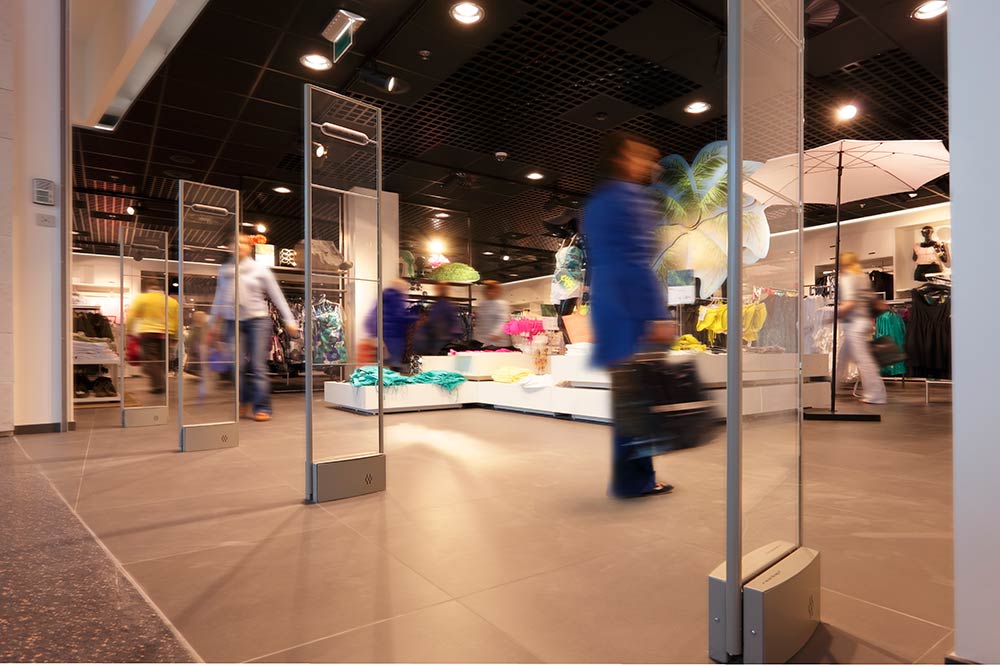The ROI on your new EAS Security Tag system

Like any business decision, installing a new Electronic Article Surveillance system should be carefully considered in a bid to maximise your return on investment.
So how do you calculate that ROI and what should you consider?
EAS lifespan
Broadly speaking, a reputable EAS system have an expected lifespan of about 10-15 years. During that time, they are required to reliably protect a retail outlet 24/7 with zero or minimum downtime and few if any false alarms.
When retailers implement an EAS system they can expect to see loss reduction of up to 60 to 80 per cent.
EAS cost
The cost of your Electronic Article Surveillance system will vary depending on a range of factors. There will also be fixed initial costs and ongoing costs over the years.
Fixed initial costs will be impacted by the:
- Type of system chosen
- The size of the retail outlet being protected
- The number of entryways that require protection
- The width of the entryway and number of pedestals required
- The way the antennas are installed – via pedestal, underfloor, overhead etc
- Delivery and installation costs
- The volume of merchandise and how many labels or tags will be required
- The number of tag detachers or label deactivators required and their installation cost
Ongoing costs include:
- Replacement tags and labels
- System maintenance
- Running costs (such as electricity consumption)
Top ROI factors to consider
When weighing up which EAS system offers the best return on an investment for your retail outlet, there are a range of factors to consider that go far beyond simple cost and instead represent value over the long term.
You get what you pay for
Like any electronic device, you get what you pay for when you invest in EAS. While there are cheap options available, these may not represent the best value over the long term. You want your system to be reliable and stand the test of time.
That may mean opting for a slightly more expensive system now in order to deliver the security, service, and reliability you require over the next decade. Its what’s inside that counts. Don’t be fooled by glossy EAS antennas. Low tech EAS systems based on years old technology are often dressed up in modern a modern external antenna. The latest digital software driven EAS systems reduce false alarms and offer higher tag detection compared to old technology systems. The big investment for manufacturers in producing a good EAS system is in the electronics and software.
Established EAS brands with a good reputation are more likely to offer these attributes as their reputation is built upon them.
Meanwhile, consider the fine print of any system, looking at factors like warranty, servicing schedules and ongoing support.
Support
If something goes wrong with your EAS system, who will assist?
An EAS system is designed to protect your store day in, day out, so if something’s not working properly or you have a question, accessible support is a must. Importantly, this support will need to include physical technicians who can come to your premises rather than just a friendly voice in a far-off country on the phone. Many leading EAS brands can log in via the internet and make any service adjustments.
Loss reduction cost
The main aim of any EAS is to reduce loss from theft. Consider exactly where your loss stands now and how much it’s costing your retail outlet. This figure encapsulates both “hard” costs and “soft” costs.
Hard costs are those that are quantifiable, such as the theft shrink rate. For example, in a store with annual sales of $1 million, a three per cent theft shrink rate would cost a retailer $30,000 per year.
Soft costs are those that are harder to ascertain, like the time it costs staff to access items that have to be locked away due to fear of theft, or the productivity cost of having staff watch the floor for theft rather than concentrating on selling.
There are also further hidden loss costs like products being out of stock due to theft, or the cost to the general ambiance of the store.
Calculating ROI
Calculating the specific ROI of your chosen EAS system involves looking at the cost of your current stock losses due to theft and weighing them against the initial and ongoing costs of your proposed system, while factoring in depreciation over the desired term.
This rough calculation offers an insight into when your system is likely to pay itself off and the very real money it could save or even earn you in the long term.
You can learn more about selecting the right system for your establishment here.